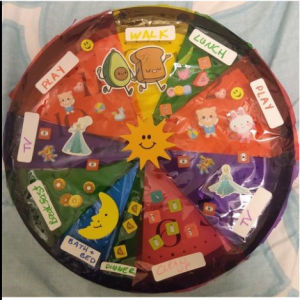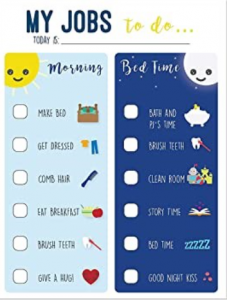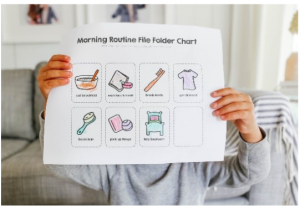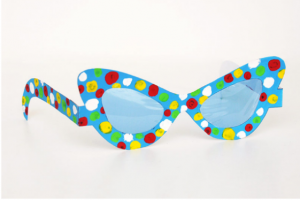All children are developing executive function skills. These are the mental processes that allow us to plan, focus attention, remember instructions, and juggle multiple tasks successfully. Like an orchestra conductor or an air traffic controller, to do all this the brain builds the ability to filter distractions, prioritize tasks, set and achieve goals, and control impulses (self-regulation).
While executive functions are emerging for all children, they can be more challenging for students with learning and behavioral disabilities. Executive functions have a major impact on a child’s academic and social participation and success.
Tips to help your child develop executive functions and independence
1 . Use visual reminders of the morning, after school and bed time routines. This can include something as simple as a written or drawn-out schedule on their bedroom door, the fridge or the bathroom.
- Keep the schedule somewhere everyone can see it.
- Look at it together often and celebrate when tasks get done – check it off!
- Have your child be part of making the schedule – they draw some of it; include favorite things; name it together e.g. “Kira’s Awesome Mornings”
- Try using a white board; window markers; or something basic like paper and felts. There are many schedules online or try making one on the computer with images your child chooses with you. It can be very simple. The power is that it is visual.



2. Have your child rehearse this schedule out loud, by using some future imagery. Sara Ward (https://www.efpractice.com/) uses the term “put on your future glasses.” Imagine what being ready for school looks like. For instance make a future picture or future movie of the process of brushing your teeth, hair, eating breakfast, etc. You could say to your child “Let’s put on our future glasses and think about what getting home will look like after school. Tell me what you will look like when you get home…what is your plan?”
3. Have your child act it out – gesture with your body the act of doing each step. Point to where you’ll be going. Example: If it’s cleaning your room, point to your room, pretend to walk there, act out the actions (open drawer; put in clothes; close the drawer; make bed). When we gesture the future, it “sticks” in our mind. This is another way to help your child to remember the steps/actions.
4. Create a check-in time with your child. This may include looking at their planner and helping them to map out their homework or assignments using a calendar. It also gives you a time to check in with how they are feeling about the day.
5. Include some natural reward systems embedded in their schedule/routine. Using a calendar/reward system that is specific and task related. Example: “If you finish packing your lunch for the week, you earn 5 min of video game time” etc.
We hope you put on your future glasses and see yourself supporting your child with one or some of these strategies!

Useful Resources and Websites
Executive functions key concepts
Activities to practice and enhance executive functions
The Role of Executive Functioning in Learning – Strategies with SLP Tera Sumpter